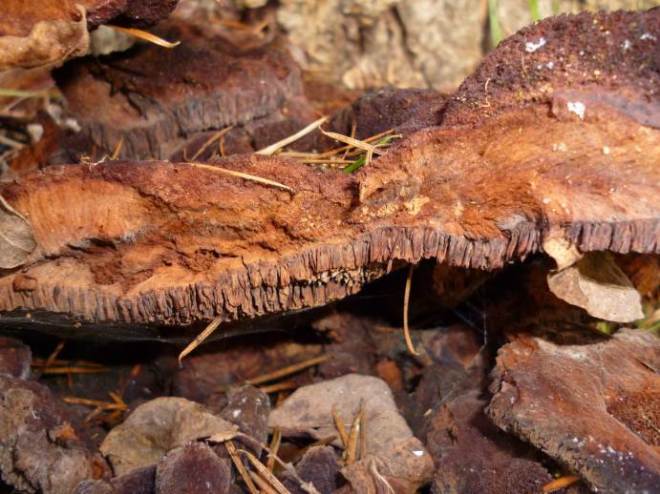Whilst the Forestry Commission were up looking at the Lawson cypress I wrote about a few weeks ago and taking samples for testing, I came across this old and worn sporophore of (what I suspect is) Phaeolus schweinitzii at the base of a very wind-beaten Pseudotsuga manziesii (Douglas fir).
This fungus is typically found colonising conifers such as the Douglas fir, pines, cedars, larches, and spruces, though may also be found on yews and broadleaved trees. This fungus causes a brown rot, and feasts upon the heartwood within its host. In terms of its means of entry, it may be either through wound or through the roots (where it will usually follow honey fungus, thereby colonising an already-stressed host). How did it infect here? Perhaps from one of the many wounds the tree has, but I cannot say for certain.
When out looking at trees (or even walking amongst them), it’s always good to keep an eye out for fungal brackets. Even if the brackets are inactive and perhaps beyond recognition, making a note of the tree’s location and remembering to return during late summer can yield a successful identification.






